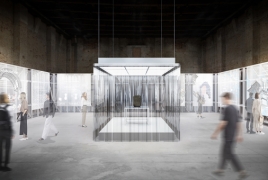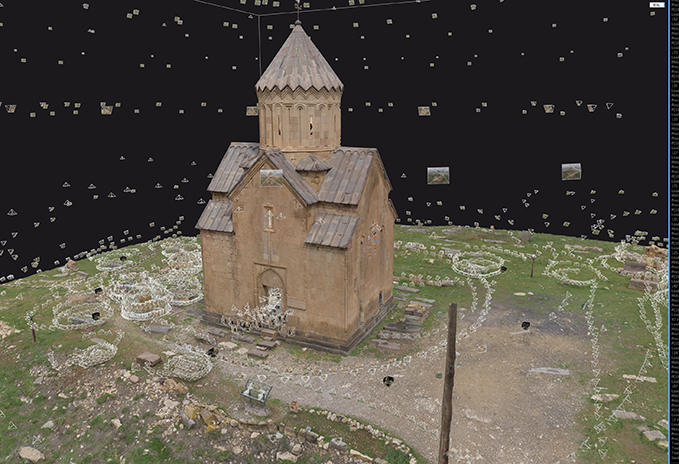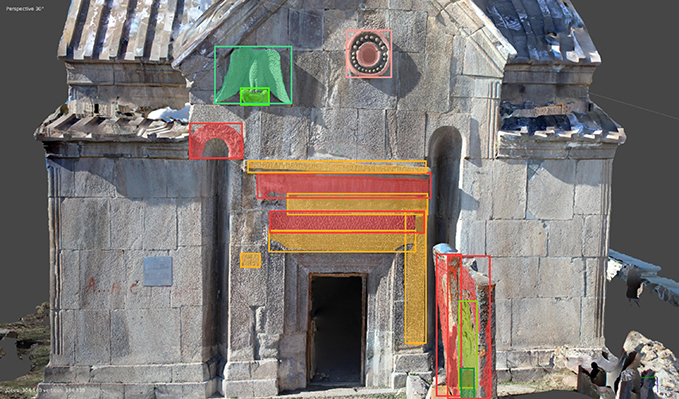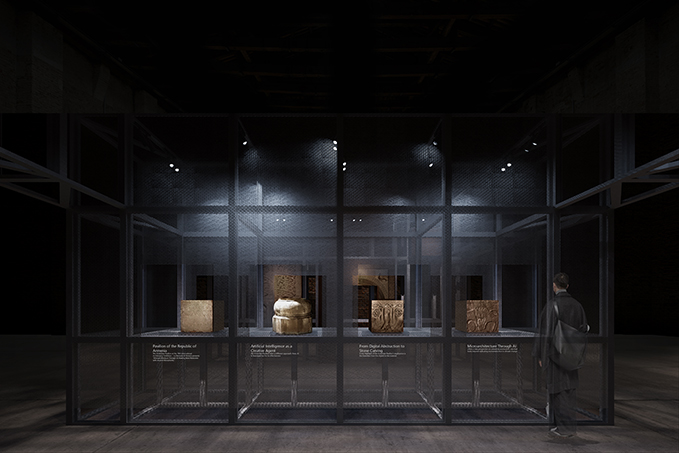
The Armenian Pavilion at the 19th International Architecture Exhibition – La Biennale di Venezia presents “Microarchitecture Through AI: Making New Memories with Ancient Monuments.”
This innovative project explores the fallibility of cultural memory and offers a critique of architectural preservation in the face of loss of heritage due to climate change—through environmental stress, climate-induced conflict, and societal neglect driven by adaptation struggles. Hosted at Tesa 41, Arsenale di Venezia, Fondamenta Case Nuove 2738/C, the exhibition questions how emerging technologies can expand our understanding of architectural memory, pushing beyond mere preservation to create new, living forms of cultural expression.
At the heart of the pavilion is a generative AI model trained on the extensive digital archive developed by TUMO’s Armenian Heritage Scanning Project, which has digitized hundreds of ancient Armenian sites using 3D scanning technology. This vast archive is more than a tool for documentation; it serves as a starting point for reexamining traditional notions of preservation and exploring the essence of cultural heritage. Through the integration of AI-driven tools developed by CALFA and MoNumEd, the project investigates how artificial intelligence can reimagine architectural legacy to create new spatial compositions that capture a unique architectural DNA and produce thought-provoking adaptations.

Microarchitecture Through AI offers a new perspective on cultural reconstruction, one that looks beyond replicating monuments lost to climate change, conflict, or neglect. In this dynamic process, the traditional concept of microarchitecture is expanded—not only in terms of scale but also through the rearrangement of small-scale architectural elements within a cohesive structure. This approach mirrors the very nature of cultural memory: not a static record of the past, but a fluid, transformative force that continuously adapts and reinvents itself.

From Digital Abstraction to Stone Carving
A key highlight of the Armenian Pavilion’s exploration is the transition from the digital to the material. AI-generated designs do not remain confined to virtual space; they are brought to life in tuff stone, the material most closely associated with Armenia’s architectural heritage. This fusion of the digital and the physical underscores the paradox of working with AI: often seen as an abstract, intangible force, here it becomes a tangible reality, grounded in the very material that has shaped Armenian monuments for centuries.
By carving speculative, machine-generated forms into stone, the project highlights the dynamic tension between tradition and design. It raises profound questions about authorship in architecture: Is AI merely a tool for human creativity, or does it assert itself as a creative agent in the process of generating form? What happens when we step back and let the machine reinterpret historical motifs on its own terms? Microarchitecture Through AI invites visitors to grapple with these questions, presenting an architectural future and collective memory shaped by AI—encouraging reflection on how technology might reimagine the past and transform the future of design.

Artificial Intelligence as a Creative Agent
AI in design is often viewed as a tool for optimization—streamlining processes, enhancing efficiency, and amplifying productivity. However, the Armenian Pavilion takes a different approach. Here, AI is leveraged not for its effectiveness, but for its potential to introduce novelty, generating new forms, anomalies, and surprising variations. As AI interprets and reimagines architectural memory, it mirrors and subverts our biases, cultural influences, and histories. It offers a glimpse into how technology can shape our evolving understanding of identity and place, inviting reflection on the complex relationship between tradition and innovation. Through this collaboration, AI becomes a catalyst for rethinking not just design, but the very act of perpetuating architectural traditions in the face of heritage loss.
This interdisciplinary project is led by curator Marianna Karapetyan and brings together a team of architects, researchers, and technologists from Electric Architects, TUMO Center for Creative Technologies, CALFA, and MoNumEd. The collaboration includes individuals who have been at the forefront of AI, heritage preservation, and experimental design, such as Sipana Tchakerian and Chahan Vidal-Gorène (CALFA / MoNumEd), Hulé Kechichian, Pegor Papazian, and Marie Lou Papazian (TUMO), Ari Melenciano, and architects Karen Badalian and Varuzhan Kochkoyan of Electric Architects. Together, they navigate the intersection of tradition and technology, offering a radical rethinking of how heritage is recorded, interpreted, and projected into the future.

Visit the Armenian Pavilion at Biennale Architettura 2025
By training an AI model on digital renditions of ancient stone monuments and carving back into stone the often hallucinatory designs generated by the model, the Armenian Pavilion invites visitors to reconsider the role of memory in architecture and the challenge of preserving cultural heritage. The exhibition explores the ways in which technology can act as both a preserver and a disruptor of tradition, challenging conventional restoration methods and proposing a new, adaptive approach to heritage preservation.

